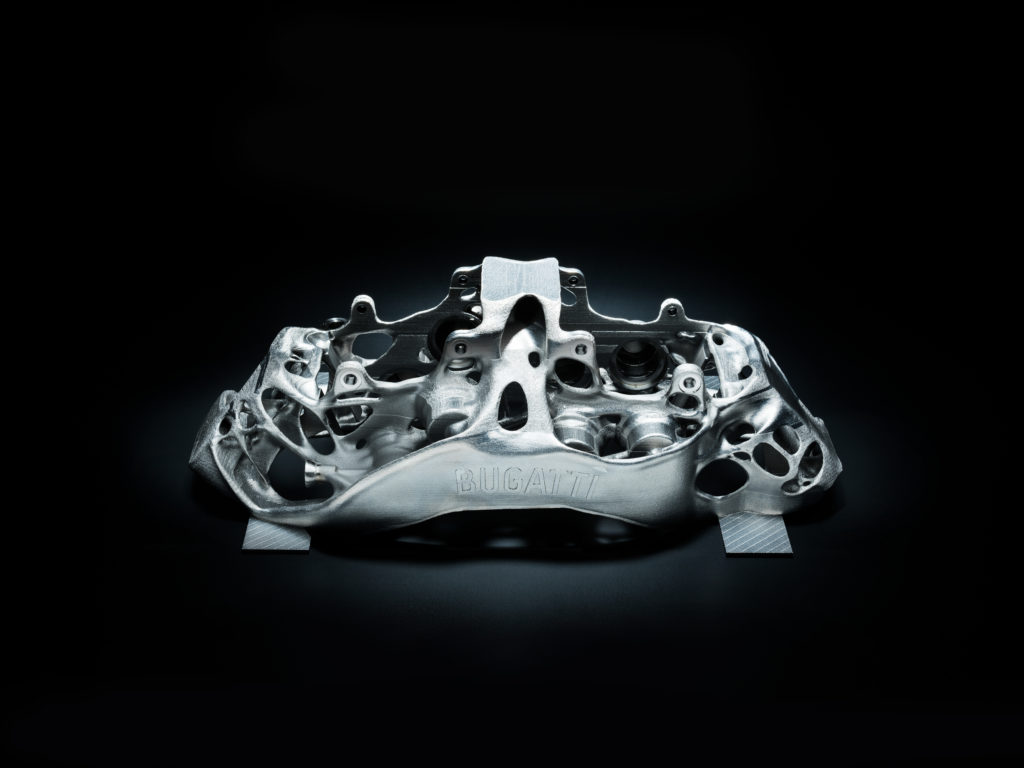It is hard not to know Bugatti acknowledged for its luxurious cars. The car manufacturer has recently created a media hype following the release of its brake caliper made using 3D printing technology (Case study – February issue of 3D Adept Mag – Page 18). The company continues its research in the use of 3D printing in the automotive industry.
Frank Götzke, Head of New Technologies at Bugatti Automobiles S.A.S. shares the view of the manufacturer in this sector of activity.
Along with other players in the 3D printing industry, Bugatti took part in the June issue of 3D Adept Mag.
What do you think of the integration of 3D metal printing in manufacturing processes in the automotive sector?
Production times are very crucial. Today’s cycle times for 3D printing are far from the cycle times of production technologies used in large-scale production. For instance, forging or pressure die-casting takes only a few seconds of cycle-time whereas 3D printing requires days. So, the integration of 3D printing in large scale production is currently not possible.
Tell us about a case where Bugatti used this technology to manufacture a part? Do the manufactured parts have the same mechanical properties than those obtained by traditional methods of manufacturing?
Bugatti has been using this technology for the Chiron prototype cars and then also for the car which is currently in production. We developed for example, a little mounting bracket with an integrated water cooling circuit which leads to the reduction of the temperature of the electric gearbox shifting pressure pump by 40°C. This part was printed out of an aluminum alloy because no bigger tensile strength was needed here. For parts where a higher tensile strength is needed, such as brake calipers or wishbones, the only material suited for 3D printing is titanium which reaches a tensile strength of around 1,250N/mm2.

In terms of cost and production time, is the additive manufacturing technology more advantageous than the manufacturing methods for Bugatti?
No, it isn’t. The biggest advantages are weight reduction and function integration.
What are the main materials that Bugatti uses to manufacture parts? Are there any limitations on their availability?
Bugatti mainly exploits UMS (Ultra Modulus Strength) carbon fiber, high-tensile titanium alloys, high-tensile steel alloys, high-tensile aluminum alloys and carbon ceramics. Until now, we only need small quantities for the manufacturing, therefore, we can’t really perceive limitations.
Do you think that, in the long run, 3D printing will completely replace the conventional manufacturing methods (techniques that require the removal of material for instance)?
No, I do not think so. Even if experts will find additive manufacturing technologies 10,000 times faster than today’s technologies, even if they are able to work with high-tensile alloys made from any material needed there will always be the need for precision machining and finishing through cutting production technologies such as turning, milling, grinding and honing.
For further information about 3D Printing, follow us on our social networks and subscribe to our newsletter!
Would you like to be featured in the next issue of our digital magazine? Send us an email at contact@3dadept.com






